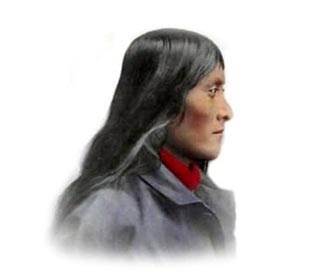- Languages: Siouan, Algonquian, Caddoan, Uto-Aztecan and Athabaskan
- Geography of the State of Southwest Native Americans: Dry, rocky land with cactus. Hot and arid. Little rain, crops required irrigation
- Animals: Desert animals such as reptiles and snakes
- Livestock: Sheep and Goats
- Natural Resources: Corn, beans, squash, sunflower seeds
- Culture and Lifestyle adopted: Farmers and some Nomadic hunters such as the Navajo
- Types of housing, homes or shelters: Farmers lived in Adobe (pueblo) houses. Hunters lived in Hogans
- Famous Tribes of Southwest Native Americans: Hopi, Pueblo, Zuni, Yuam, Apache and Navajo.
- The Native Indians who lived on the borders of lands often reflected two different types of lifestyles.
Southwest Native Americans Culture groups
The Indian tribes who are categorised in the Southwest Native Americans culture group fall into three main categories: - The Farmers - The Yuma and Pima
- The Villagers - The Zuni, Pueblo and Hopi
- The Nomads - The Apache and Navajo
Southwest Native Americans - Languages
The languages of the Southwest Native Americans included Siouan, Algonquian, Caddoan, Uto-Aztecan and Athabaskan Southwest Indians - Physical Characteristics
The physical characteristics of Southwest Indians are dark brown eyes, prominent cheek bones, straight black hair, and scantiness of beard. The skin color of Native Indians varies from very light in some tribes such as the Cheyenne, to almost black in others, such as the Caddo and a yellowish color in such as the Flatheads. Southwest Native Americans - Geography and Environment
The Geography and Environment can be generally described as inhospitable desert land covered with cactus. Dry, rocky land. Hot and arid. Little rain, crops required irrigation.
Southwest Native Americans - Animals
The animals available to the Southwest Native Americans included desert animals such as reptiles and snakes. There was also wild turkey which supplemented their diet.
Southwest Native Americans - Crops
The crops included corn (maize). The tribes grew 24 different types of corn. They also grew beans, squash, melons, pumpkins and fruit. Huge cactus called the organ pipe and the saguaro grew in the desert.
Southwest Native Americans - Houses, Shelters and Homes
The different types of Houses, Shelters and Homes depended on the materials available and whether the home was permanent or temporary. The homes of the Southwest Indians included Adobe (pueblo) clay houses and Hogans. Wooden or bone ladders were used to reach higher buildings and rooms.
Southwest Native Americans - Religion, Ceremonies and Beliefs
The Religion, Ceremonies and Beliefs were based on Animism. Animism was a commonly shared doctrine, or belief, of the indigenous people of North America and Canada including the Southwest Indian tribes. Animism is based on the spiritual or religious idea that the universe and all natural objects have souls or spirits. In this religion it is believed that souls or spirits exist not only in humans but also in animals, plants, trees, rocks etc. This belief is also extended to natural phenomena such as thunder storms and rain and geographic features such as mountains, caves or rivers also possess souls or spirits. Kachina figures - sacred spirits of dead ancestors who bring the rain. The Shaman or Medicine Men of the tribes also use objects called Prayer Sticks. The ceremonies of the Southwest Native Americans included the winter and summer soltice festivals of the Niman during which the Snake Dance was performed and the Soyal festival. Southwest Native Americans - Kachina Dolls
Kachina dolls are made from wood and had masks and costumes to look like the men who dressed up as Kachina spirits. |
